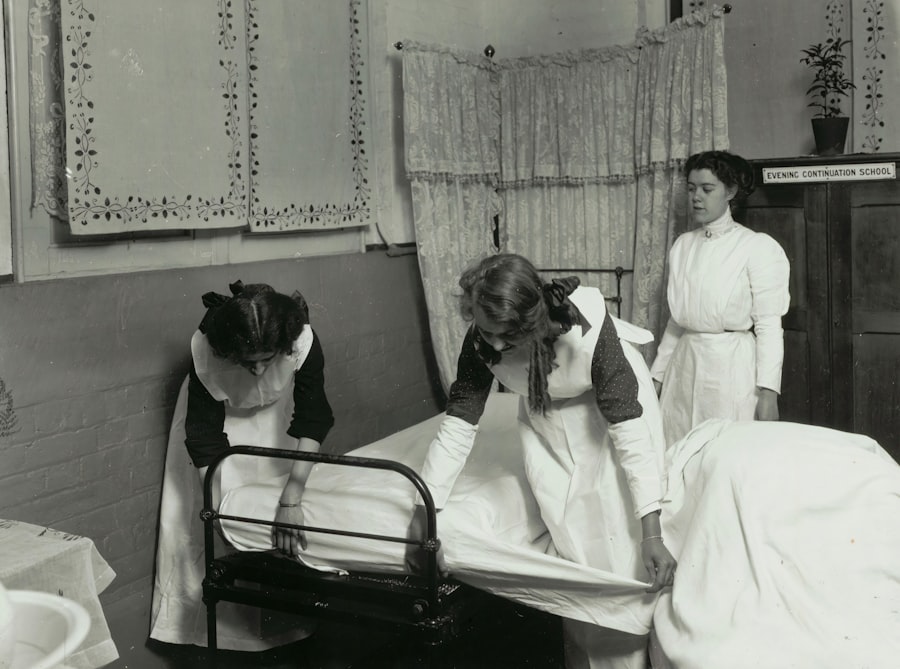When it comes to our homes, we often focus on the big-ticket items like furniture, appliances, and flooring, but one area that deserves just as much attention is our window coverings. Regular cleaning and maintenance of these often-overlooked elements are crucial for several reasons. First and foremost, clean window coverings can significantly enhance the overall aesthetic of a room.
Dust, dirt, and grime can accumulate over time, dulling the colors and textures of your blinds, shades, or curtains. By keeping them clean, I can ensure that they continue to contribute positively to my home’s decor. Moreover, regular maintenance can extend the lifespan of my window coverings.
Just like any other household item, neglecting to clean and care for them can lead to wear and tear. For instance, dust can cause fabric to fray or wood to warp. By incorporating a simple cleaning routine into my home maintenance schedule, I can prevent costly replacements down the line.
Additionally, clean window coverings can improve indoor air quality. Dust and allergens can become trapped in fabrics and materials, which can affect my health and that of my family. Therefore, maintaining clean window coverings is not just about aesthetics; it’s also about creating a healthier living environment.
Key Takeaways
- Regular cleaning and maintenance of window coverings is important to ensure they remain in good condition and last longer.
- Different types of window coverings have specific cleaning requirements, so it’s important to understand the needs of each type.
- When cleaning fabric window coverings, it’s important to follow the manufacturer’s instructions and avoid using harsh chemicals that could damage the fabric.
- Wood and faux wood window coverings should be cleaned with a gentle cleaner and a soft cloth to avoid scratching or damaging the surface.
- Vinyl and aluminum window coverings can be cleaned with a mild detergent and water, but it’s important to avoid abrasive cleaners that could cause damage.
- Regular maintenance of window coverings, such as dusting and checking for any damage, can help extend their lifespan.
- Common mistakes to avoid when cleaning window coverings include using too much water, using abrasive cleaners, and not following the manufacturer’s instructions.
- Professional cleaning and maintenance services for window coverings can help ensure they are properly cared for and can extend their lifespan.
Different Types of Window Coverings and Their Cleaning Requirements
Window coverings come in a variety of styles and materials, each with its own unique cleaning requirements. For instance, fabric curtains and drapes are popular choices for adding warmth and texture to a room. However, they can also attract dust and allergens more readily than other materials.
On the other hand, blinds—whether made from wood, faux wood, vinyl, or aluminum—offer a sleek look but require different cleaning techniques depending on their material. Understanding these differences is essential for effective maintenance. For example, fabric window coverings often need to be washed or dry-cleaned periodically to keep them looking fresh.
In contrast, wooden blinds may only require a quick dusting or occasional wipe-down with a damp cloth. Faux wood blinds are generally more forgiving and can withstand a bit more moisture during cleaning. Vinyl and aluminum blinds are typically the easiest to maintain; a simple wipe with a damp cloth usually does the trick.
Knowing the specific cleaning requirements for each type of window covering helps me tailor my cleaning routine effectively.
Tips for Cleaning Fabric Window Coverings

Cleaning fabric window coverings might seem daunting at first, but with a few simple tips, I can make the process much easier. First off, I always start by checking the care label on my curtains or drapes. This label provides essential information about whether they can be machine washed or if they require dry cleaning.
If they are machine washable, I make sure to use a gentle cycle with cold water to prevent any shrinkage or damage. For those times when I can’t wash my fabric window coverings, I find that vacuuming them regularly helps keep dust at bay. Using a soft brush attachment on my vacuum cleaner allows me to gently remove dust without damaging the fabric.
Additionally, I sometimes use a lint roller for quick touch-ups between washes; it’s surprisingly effective at picking up pet hair and other debris. If I notice any stains, I treat them promptly with a fabric-safe stain remover before they set in. This proactive approach not only keeps my window coverings looking great but also prolongs their lifespan.
Tips for Cleaning Wood and Faux Wood Window Coverings
When it comes to cleaning wood and faux wood window coverings, I find that a gentle touch goes a long way. These materials can be sensitive to moisture, so I always start by dusting them with a microfiber cloth or a feather duster to remove any loose particles. This step is crucial because it prevents dirt from scratching the surface during deeper cleaning.
If my wooden blinds need more than just dusting, I use a slightly damp cloth with a mild soap solution to wipe them down. It’s important to avoid soaking the wood; instead, I focus on using just enough moisture to clean without causing damage. For faux wood blinds, I have a bit more leeway since they are generally more durable.
A damp cloth works well here too, but I can also use a gentle all-purpose cleaner if needed. After cleaning, I always make sure to dry them thoroughly to prevent any warping or damage.
Tips for Cleaning Vinyl and Aluminum Window Coverings
Vinyl and aluminum window coverings are among the easiest types to clean, which is one of the reasons I love them so much! For these materials, I typically start by dusting them off with a microfiber cloth or a soft brush attachment on my vacuum cleaner. This initial step helps remove any surface dust before I move on to deeper cleaning.
For a more thorough clean, I mix warm water with a few drops of dish soap in a bucket. Using a soft sponge or cloth, I gently wipe down each slat or panel of the blinds. The beauty of vinyl and aluminum is that they can handle a bit more moisture than wood without risk of damage.
After wiping them down, I rinse with clean water using another cloth to remove any soap residue. Finally, I dry them with a towel or let them air dry completely before closing them again.
How to Maintain Window Coverings to Extend Their Lifespan

Cleaning Schedule
Regular cleaning helps prevent dirt buildup that can lead to more significant issues later on. For instance, dusting blinds every couple of weeks and washing fabric curtains every few months can make a significant difference.
Operating Window Coverings with Care
Being mindful of how you operate your window coverings is crucial. When raising or lowering blinds, do so gently to avoid putting unnecessary strain on the mechanisms. Similarly, avoid pulling too hard on fabric curtains when opening or closing them, as this can prevent tears and fraying over time.
Protecting from Direct Sunlight
Lastly, keeping window coverings away from direct sunlight when possible can help prevent fading and deterioration of materials. By following these simple tips, you can extend the lifespan of your window coverings and keep them looking their best.
Common Mistakes to Avoid When Cleaning Window Coverings
While cleaning window coverings may seem straightforward, there are several common mistakes that I’ve learned to avoid over time. One major pitfall is using harsh chemicals or abrasive cleaners that can damage the material. For instance, using bleach on colored fabrics can lead to discoloration, while scrubbing wooden blinds too vigorously can scratch their surface.
Instead, I always opt for gentle cleaners and soft cloths. Another mistake is neglecting to read care labels before cleaning fabric window coverings. Some fabrics may require special care or specific cleaning methods that differ from standard practices.
Ignoring these instructions could lead to irreversible damage. Additionally, failing to regularly dust or clean my window coverings can result in dirt buildup that becomes increasingly difficult to remove over time. By staying consistent with maintenance and being mindful of the products I use, I can keep my window coverings looking their best.
Professional Cleaning and Maintenance Services for Window Coverings
Sometimes, despite our best efforts at home, we may find that our window coverings need a little extra TLC that we can’t provide ourselves. In such cases, professional cleaning services can be an excellent option. These experts have specialized equipment and knowledge about various materials that allow them to clean effectively without causing damage.
I’ve found that hiring professionals not only saves me time but also ensures that my window coverings receive the deep clean they deserve. Many services offer tailored solutions based on the type of window covering I have—whether it’s fabric drapes or wooden blinds—ensuring that each material is treated appropriately. Plus, professional services often include inspections for any potential repairs needed, which can help me catch issues before they become major problems.
In conclusion, taking care of my window coverings is an essential part of maintaining my home’s overall appearance and functionality. By understanding the different types of materials and their specific cleaning requirements, I can keep my window treatments looking fresh while extending their lifespan. Regular maintenance routines combined with professional services when necessary ensure that my home remains inviting and comfortable for years to come!
For those looking to enhance their home’s aesthetic while ensuring their window coverings remain in top condition, our article on Window Coverings for Bay Windows: The Definitive Guide offers valuable insights. This guide not only discusses various styles and materials suitable for bay windows but also provides tips on how to clean and maintain these unique window treatments effectively. By following the advice in both articles, you can ensure your window coverings look great and function well for years to come.
FAQs
What are some general tips for cleaning and maintaining window coverings?
- Regularly dusting or vacuuming your window coverings can help prevent the buildup of dirt and grime.
— Following the manufacturer’s instructions for cleaning is important to avoid damaging the window coverings.
— Spot cleaning stains and spills as soon as they occur can prevent them from setting in and becoming more difficult to remove.
— Professional cleaning services may be necessary for certain types of window coverings, such as delicate fabrics or intricate designs.
How often should window coverings be cleaned?
- The frequency of cleaning window coverings can vary depending on factors such as the type of covering, the location of the window, and the level of dust and dirt in the environment.
— Generally, it is recommended to dust or vacuum window coverings at least once a month to prevent the buildup of dust and dirt.
What are some common methods for cleaning different types of window coverings?
- For fabric window coverings, such as curtains or drapes, regular vacuuming with a brush attachment or gentle hand washing may be suitable.
— Blinds can be cleaned with a microfiber cloth, duster, or vacuum attachment, and spot cleaning may be necessary for stubborn stains.
— For vinyl or plastic window coverings, such as blinds or shades, wiping with a damp cloth or sponge and mild detergent is often effective.
How can I maintain the quality and longevity of my window coverings?
- Avoid exposing window coverings to direct sunlight for prolonged periods, as this can cause fading and deterioration.
— Regularly inspecting and addressing any damage or wear and tear can help prevent minor issues from becoming more serious.
— Following the manufacturer’s recommendations for care and maintenance, such as avoiding harsh chemicals or abrasive cleaning methods, can help preserve the quality of the window coverings.



